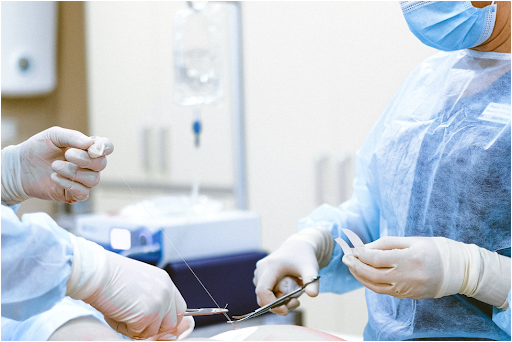Facelift surgery is a procedure that can correct facial sagging and other imperfections. Your plastic surgeon will discuss your aesthetic goals to select an optimum technique that meets these objectives.
Traditional facelifts involve pulling on the skin backwards in order to elevate sagging tissues, while deep plane facelifts use muscle repositioning techniques and tightening at its base to achieve more natural, long-term results. In order to learn more about these procedures, read on.
Deep Plane Facelift
Deep Plane Facelift is an anti-gravity facelift of choice among many plastic surgeons and patients. It is a newer procedure creating a more natural appearance while improving cheekbones, jawline, and neck without producing an over-pulled look associated with other facelift surgery techniques. This procedure lifts deep tissue rather than simply tightening and suturing it like traditional facelifts do.
At the procedure, a plastic surgeon will make incisions along the hairline, in the folds of the ear, and at the back of the head behind the ears in order to gain access to deeper muscles and tissues. He/she will release and elevate SMAS-platysma muscle in the face as well as Zygomatic Culical Ligaments along the jawline in order to lift areas that tend to droop with age.
After lifting deep tissue, plastic surgeons use stitches to close incisions. This procedure leaves virtually imperceptible scars. It doesn’t pull earlobes down (a common issue with other facelift procedures), creating “pixie-ear” deformity in patients.
Mini-Facelift
Mini facelifts are less invasive cosmetic surgery options for treating mild to moderate skin laxity, offering men and women between the ages of 30-40 a less invasive cosmetic solution that lifts cheeks and defines jaw lines. Ideal for both men and women in their 30s and 40s, mini facelifts can also be combined with other facial rejuvenation procedures to enhance results.
Mini-facelift incisions are typically concealed within natural skin creases around the ears and hairline for maximum concealment of scars post-procedure and to give an unobtrusive result. In addition, this treatment may also be combined with neck lifting to tighten nasolabial folds and help combat signs of aging in this region.
Though many individuals worry that having their face lifted will result in them appearing “operated” or artificial, some doctors offer a special kind of facial plastic surgery expertise that ensures natural-looking results that can last anywhere up to 15 years – and may continue to improve over time.
Many people seeking treatment to address sagging facial skin and wrinkles caused by age or gravity pulling on tissues in their jawline and neck region, often creating an angry look to lower half of face, chose mini-facelifts (which you can read more about by clicking here) for their first go as it seems easiest.
However, they are best suited to younger patients with less sagging tissue in these areas. When combined with a neck lift, mini-lifts can address loose skin in the nasolabial fold as well as tightening of its associated muscles – it may even be combined with fat grafting in order to rejuvenate sunken cheeks due to age or injury.
As with any surgical procedure, swelling and bruising are normal after any procedure, and can usually be managed effectively using oral pain medications. Most patients will need to wear their dressing or drains until an appointment with their surgeon to have them removed at which point they can resume daily activities as usual.

S-Lift
The S-Lift is an increasingly popular facelift alternative, ideal for individuals who do not require tightening of all lower facial tissues. It is less invasive than its counterpart and produces stunning results while minimizing scarring, bruising and recovery time. Patients typically resume daily activities within days following an S-Lift procedure by using small incisions hidden by hairline or natural creases around ears to separate skin from tissue underneath it.
According to this article: https://www.ncbi.nlm.nih.gov/pmc/articles/PMC3229348/, the entire procedure is conducted under local anesthesia, with patients returning home shortly thereafter. Swelling and bruising should gradually decrease over time; once initial healing processes have concluded, patients can resume their normal lives; it is advised they limit direct sunlight exposure for optimal healing results.
Full facelift procedures typically last several hours and your recovery should last several weeks; in order to minimize future sagging or swelling issues after your procedure it’s crucial that you maintain a stable weight as well as follow a healthy skincare regime. So make sure you keep up with what your doctor orders and you’re sure to be satisfied with the results.

